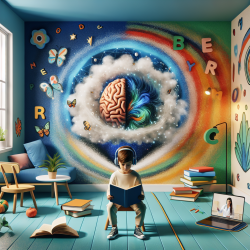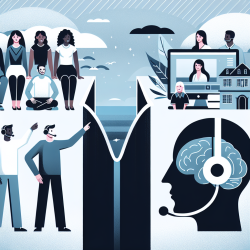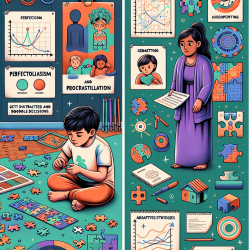As practitioners dedicated to improving the lives of children, it’s essential to stay informed about the latest research and techniques that can enhance learning outcomes. One recent study, titled "Sensory white noise improves reading skills and memory recall in children with reading disability" by Söderlund et al., provides valuable insights into how sensory white noise can be used to improve reading skills and memory recall in children with reading disabilities.
This blog will delve into the findings of this research and offer practical ways to implement these insights into your therapeutic practice.
Understanding the Research
The study by Söderlund et al. explored the effects of sensory white noise on reading and memory performance in children with reading disabilities (RD). The researchers conducted experiments with 30 children with RD and phonological decoding difficulties, comparing their performance to two other groups: skilled readers and children with mild orthographic reading problems.
The results were groundbreaking:
- Visual and auditory white noise exposure improved some reading and memory capacities in children with RD.
- Moderate levels of visual white pixel noise enhanced word reading and memory recall.
- Auditory noise (80 dB) improved nonword reading.
- Children without phonological decoding difficulties did not benefit from white noise and sometimes performed worse.
Implementing Sensory White Noise in Therapy
Given these findings, how can practitioners integrate sensory white noise into their therapeutic practices? Here are some actionable steps:
1. Assess the Child’s Specific Needs
Before introducing sensory white noise, assess whether the child has phonological decoding difficulties. This step is crucial because the study found that children without these difficulties did not benefit from white noise exposure.
2. Choose the Right Type of White Noise
The study differentiated between visual white pixel noise and auditory white noise. Here’s how you can apply each:
- Visual White Pixel Noise: Use visual white noise on screens during reading exercises to improve word reading and memory recall.
- Auditory White Noise: Introduce auditory white noise (around 80 dB) during phonological decoding activities to enhance nonword reading.
3. Monitor and Adjust
It’s important to monitor the child’s response to white noise and adjust accordingly. While many children with RD may find white noise beneficial, individual preferences and tolerances can vary. Regularly check in with the child to ensure they are comfortable and benefiting from the intervention.
4. Combine with Other Interventions
While sensory white noise can be a powerful tool, it should be part of a comprehensive intervention plan. Combine it with other evidence-based practices, such as phonics instruction and reading fluency exercises, to maximize outcomes.
Encouraging Further Research
The study by Söderlund et al. opens the door for further research into the use of sensory white noise in educational therapy. As practitioners, we can contribute to this growing body of knowledge by:
- Documenting and sharing our experiences with sensory white noise in practice.
- Collaborating with researchers to conduct small-scale studies or case reports.
- Staying updated on the latest research and integrating new findings into our practice.
Conclusion
Sensory white noise presents a promising avenue for improving reading skills and memory recall in children with reading disabilities. By understanding and implementing the findings of the research by Söderlund et al., practitioners can enhance their therapeutic practices and create better outcomes for children.
To read the original research paper, please follow this link: Sensory white noise improves reading skills and memory recall in children with reading disability.










